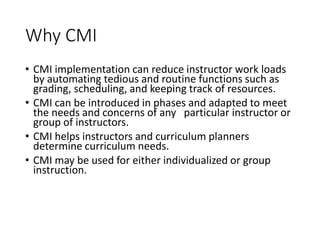In the ever-evolving world of logistics, companies are constantly seeking innovative solutions to streamline their operations and cut costs. One such solution that has been gaining traction in recent years is Co-Managed Inventory (CMI). This unique approach to inventory management allows companies to share the responsibility of managing inventory with their suppliers, leading to greater efficiencies and improved supply chain performance. In this article, we dive into the world of CMI logistics, exploring its benefits, challenges, and best practices for successful implementation.
The Benefits of Implementing Co-Managed Inventory (CMI)
Co-Managed Inventory (CMI) is a highly effective strategy for optimizing inventory management and improving collaboration between suppliers and customers. By sharing inventory data and responsibilities, both parties can benefit from reduced stockouts, lower carrying costs, and improved customer satisfaction. This collaborative approach allows for better communication and coordination, leading to more accurate demand forecasting and streamlined replenishment processes.
With CMI, businesses can build stronger partnerships with their suppliers, leading to more efficient logistics, transport, and shipping processes. By working together to monitor and manage inventory levels, companies can reduce lead times, minimize waste, and increase overall supply chain efficiency. This proactive approach to inventory management can help businesses stay competitive in today’s fast-paced market and better meet the demands of their customers.

Optimizing Logistics Efficiency with CMI
Co-Managed Inventory (CMI) is revolutionizing the way businesses manage their logistics operations. By partnering with a third-party logistics provider that offers CMI services, companies can streamline their inventory management processes, reduce costs, and improve overall efficiency. With CMI, the logistics provider takes on the responsibility of managing inventory levels, ordering products, and ensuring that shipments are delivered on time, allowing businesses to focus on other core activities.
One key benefit of CMI is the ability to optimize inventory levels to minimize stockouts while avoiding excess inventory. By leveraging real-time data and analytics, businesses can accurately forecast demand, adjust inventory levels as needed, and reduce carrying costs. In addition, CMI helps improve supply chain visibility, enabling companies to track shipments, monitor inventory levels, and quickly identify any issues that may arise. Overall, CMI is a game-changer for businesses looking to enhance their logistics efficiency and drive profitability in today’s competitive market.

Strategies for Successful CMI Implementation in Transport and Shipping
When it comes to implementing Co-Managed Inventory (CMI) in the transport and shipping industry, there are several key strategies that can help ensure success. One important strategy is to establish clear communication channels between all parties involved in the CMI process. This includes suppliers, logistics providers, and shipping companies. By keeping everyone informed and on the same page, potential bottlenecks and delays can be minimized.
Another crucial strategy is to leverage technology to streamline the CMI process. Implementing a robust inventory management system that allows for real-time tracking and updates can greatly improve efficiency and accuracy. Additionally, utilizing data analytics and predictive modeling can help forecast demand and optimize inventory levels, leading to cost savings and improved customer satisfaction. By combining clear communication and advanced technology, successful CMI implementation in the transport and shipping industry can be achieved.

Maximizing Cost Savings through CMI Collaborations
One of the most effective ways to maximize cost savings in the logistics, transport, and shipping industries is through Collaborating with Co-Managed Inventory (CMI) systems. By working closely with suppliers and customers to efficiently manage inventory levels, companies can reduce carrying costs, minimize stockouts, and improve overall supply chain performance.
With CMI collaborations, businesses can streamline their operations, reduce excess inventory, and enhance order fulfillment processes. By sharing real-time data and insights with partners, companies can make more informed decisions, optimize inventory levels, and minimize transportation and warehousing costs. This collaborative approach not only improves efficiency but also strengthens relationships with key stakeholders, ultimately leading to mutual benefits and long-term success.
Insights and Conclusions
In conclusion, Co-Managed Inventory (CMI) offers a new way for businesses to streamline their supply chain management process. By collaborating with suppliers to manage inventory levels, companies can reduce costs, minimize stockouts, and improve overall efficiency. With the right implementation and communication, CMI can transform the way logistics, transport, and shipping are handled. So, next time you’re looking to optimize your inventory management, consider the advantages that CMI could bring to your business.